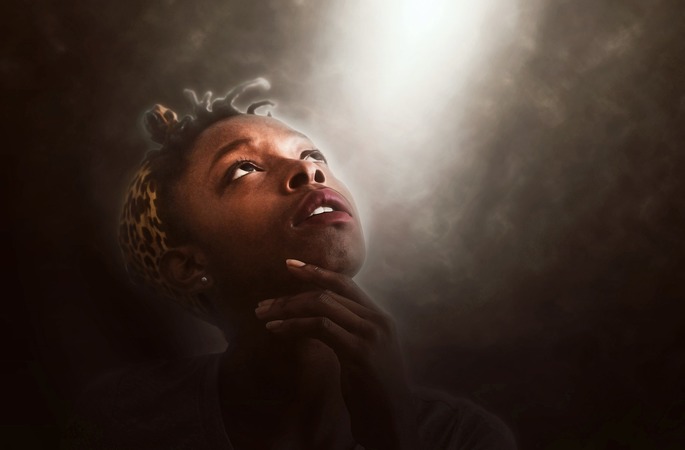It’s 2021, and breasts are in danger. We’ve always known that, but this is a danger like you’ve never heard before. To all the ways that women’s bodies are pillaged and plundered by patriarchy, add breast ironing. As another reason why we’re more than 100 years from reaching gender equality, we hear the tormenting screams of a 10-year-old girl pinned to a wall by the pain of a searing hot stone against her budding breasts.
The thought of breasts being ironed is enough to make anyone squirm, but for mothers desperate to see their daughters complete their education, the alternative is as painful.
Desperation and misinformation make for terrible bedfellows.
From the first Women’s Rights Convention in 1840s New York, through Britain’s Suffragettes of the 1860s, to the 1960s assassination of the Mirabal sisters by the Dominican dictator Raphael Trujillo, women of the world ignited the fight for their enfranchisement and gender equality and kept it going, sometimes with their very blood.
Throughout this history, the patriarchal, egotistic, sexist man has been viewed as the ‘problem’ blockading the advancement of women empowerment in different quarters. But, what if, in some instances, the saboteur of women’s emancipation is the woman herself? This might seem the case in Cameroon, where female relatives iron the breasts of their pubescent girls, but at a closer look, breast ironing is the benevolent mission of fear-fuelled love.
Breast ironing or flattening reportedly affects 25% of girls in Cameroon. It is the pounding and massaging of a pubescent girl’s breasts in an attempt to halt their development or make them disappear.
Stones, spatulas, pestles, and other implements are heated over hot coals then pressed against the tender sprouting breasts of a girl by a mother, grandmother, and in some cases, the girls themselves. This unimaginable abuse is a source of fear, pain, and shame in the pubescent girls of Cameroon and several other African countries.
Besides massaging with hot objects, breast binders are also used in the younger girls to ‘keep the breasts inside’. One 9-year-old victim reported her breast binder to be so tight it scared her because she couldn’t breathe.
Rebecca Tapscott reports that the practice evolved from the traditional warm breast massages used to even out breasts or help with milk flow during lactation. Repurposing of breast massage into its current ‘protective’ form is said to have been triggered by the moral panic brought by the HIV/AIDS epidemic, coupled with easy access to e-communication through which young people plan rendezvous sexual encounters.
In some parts of Cameroon, breast development is believed to indicate sexual maturity, making breasts a signal for rapes, sexual experimentation, and early marriages. Therefore, breast ironing is meant to ‘delay’ puberty and is seen as a form of contraception.
Outside Africa, The Guardian reported cases of breast ironing within the Cameroonian diaspora in the United Kingdom as recently as 2019, despite easy access to contraception in the country. Its prevalence in Birmingham and London prompted the MP Jake Berry to carry a motion to the House of Commons (2016) to have breast ironing criminalized as child abuse.
Societal context and motivations for breast ironing.
Traditionally, child marriages in Cameroon allowed girls to be married off at the onset of puberty, leaving little chance for premarital pregnancies. In modern times, the early onset of puberty at 8 or 9 years old creates fear in mothers that their daughters may be pulled into womanhood too soon. Mothers also want to safeguard their daughters’ future by ensuring they complete their education to gain financial independence.
In most African countries, there are few pathways for a girl to complete her education after dropping out to birth a child. Completing school widens the gap between puberty and marriage, making the still fertile girls vulnerable to sexual predators and at risk of STIs and pregnancy. RENATA, a Cameroonian NGO, reports that rape and incest are widespread in society, making any means to protect young girls from such abuse necessary.
Therefore, breast ironing is a means to protect the girl from sexual harassment and rape, forestall early pregnancy to avoid disgracing her and her family, and allow the girl to finish school rather than be forced into early marriage owing to the pregnancy. It is believed to delay pregnancy by ‘removing’ signs of puberty and fertility. Moreover, the resultant ‘flat-chested’ girls are viewed as less sexually attractive to men, increasing their safety from sexual predators.
Victims report that breast ironing is sustained by secrecy between victims and perpetrators. Fathers or male relatives are often unaware of its occurrence, and some fathers have been known to rescue their daughters once they discover the humiliating pain they’re subjected to.
According to a 2011 report by Cameroonian Gender initiative GaED, despite breast ironing, teenage pregnancy is increasing, where a third of the 20 to 30 per cent of girls with unwanted pregnancies are between 13 and 25 years of age. Moreover, in a report by New Internationalist, survivors of the practice attributed their subsequent early pregnancies to a resultant loss of confidence and self-worth.
Torturing girls by ironing their breasts has failed to keep men and boys off the bodies of young girls in the countries it exists.
Physical side effects of breast ironing.
When done correctly, breast ironing is said to halt the development of breasts and delay it for some years. However, the harmful practice adversely affects its victims in various ways.
Some frequently cited side effects of breast ironing include an immediate delay or halting of breast growth; swelling, burning, irritation, pimples on the breasts, abscesses, fever, extreme pain; a long-term overgrowth of one or both breasts or failure for one or both breasts to grow; difficulty to breastfeed, scarring, and breast cancer. Some victims of breast ironing have been treated for first and second-degree burns and cases of oedema from overgrown or swollen breasts. Severe wounds have also been reported, as in the case below.
“My mother told me that my breasts were going to attract men. So she brought me to a traditional healer. He grabbed a knife, cut my breasts, one after the other, and sucked the insides out with a tube. He told me: ‘If you don’t do it, people will think you’re a prostitute.’ I fainted from the pain. It took days to heal. Breasts are a gift from God.” –Lisette, 34 years old, via Vice Australia.
Many women sharing at a Gender Danger run community initiative to end breast ironing revealed some troubling effects it had on their daughter’s bodies, such as failure of ironed breasts to regrow or grow as stubs, breasts growing extraordinarily large after the ironing, and some breasts developing disproportionately. In one case, one breast grew naturally while the other developed a hole in the middle.
One victim reported that her breasts were so damaged from being ironed they needed corrective surgery.
Like many others whose mammary glands were destroyed by immense heat, she was unable to breastfeed later. Another victim remembers that instead of nourishing white milk, black fluid flowed out of her breasts when she attempted breastfeeding.
Psychological side effects
Dr Flavian Ndonko, the author of a GIZ study investigating the practice in Cameroon, explained that the practice created a negative relationship between victims and their breasts, leading to anxiety, shame, and frustration when breasts developed at a later age.
Furthermore, Alain Nguidjoï, in his 2008 report on the practice in Yaoundé, cited depression and withdrawal from the community as other side effects of breast ironing. Sudden onset of violence from previously loving parents caused victims to internalize the abuse as rejection, believing no one would listen to them if they sought help. This further thickened the wall of silence on which the practice thrives.
In 2015, Gildas Paré, a French photographer, photo-documented the experiences of breast ironing victims in Cameroon, sharing his findings in an interview with Vice. In his report, one 19-year-old victim (at the time) recounts:
“I was eight when my mother told me: ‘Take your top off. Do you have breasts already? When a girl your age has breasts, men look at her.’ When she realized a pestle wasn’t working, she used a (hot) rock. That was hell. It felt like my body was on fire. Sometimes, I try to understand my mother’s actions. It hurts so much when I look at myself in the mirror.” –Doriane, 19 years old, via Vice Australia.
Paré dubbed this photo project ‘Plastic Dream’ because many of the victims he interviewed would like to have corrective plastic surgery on their breasts. That being too costly, they hide their breasts in shame and grief.
Commenting on the black backgrounds he chose for the victims’ portraits, Paré said:
“Like the female stereotypes, these photographs of naked women under black frames are at first sight like precious jewels in their cases. But the banner of the text, like a veil masking their intimacy, reflects the wound of their femininity.” (Paré)
Thus, breast ironing cuts beneath the chest and scars the mind, leaving its victims uncomfortable in their bodies due to a warped view of their femininity.
Community advocacy is breaking the silence and bringing healing
When Nina Garthwaite interviewed a perpetrator in her short documentary on breast ironing, she responded that were anyone to condemn her actions towards her daughters; she’d tell them that ‘this was her way’, and they shouldn’t interfere.
Condemning breast ironing isn’t good enough. Educating perpetrators on its inability to inhibit fertility, however, is a powerful weapon against the practice. It’s what some local NGOs are on a mission to do: show mothers through reproductive health education that ‘no breasts’ doesn’t equate to ‘no babies.’
The New Internationalist reports that RENATA, a Cameroonian NGO, drives change through advocacy against breast ironing and violence against women. They also offer sex education and psychological support for victims. RENATA has been at work since 2006, partnering with local schools, the media, and religious groups to widen their impact. Sexual and reproductive health education provided to victims and perpetrators exposes the futility of breast ironing, breaks taboos around sex discussions, enhances parent-child communication, and consequently reduces occurrences of breast ironing.
RENATA also equips girls with tools on body positivity, saying NO to sexual advances and reporting perpetrators of both sexual abuse and breast ironing. This reduces the secrecy under which breast ironing thrives and increases the success of mitigation efforts.
More importantly, by engaging both girls and boys in sexual health education, RENATA involves the men of tomorrow in the fight for women’s sexual emancipation by giving them tools to create safer communities for girls and women. This, hopefully, is chipping away at patriarchy and the objectification of women’s bodies.
Alongside RENATA is Gender Danger, another grassroots advocacy movement started by Chi Yvonne Leina, a journalist and Human Rights Activist. Leina recounted the trauma experienced by her cousin Aline, following the repeated ironing of her breasts by their grandma. The thoughts of pain and intrusion into her body awaiting her after school saturated Aline’s mind so that she fell behind in her studies. She dropped out of school and later became a teenage mother, the very disease which ironing her breasts had purported to cure.
This incident emboldened Leina to stand up against her grandma when her turn came, leading to the realization that women’s empowerment cannot be achieved without giving the girl child a voice. This is further confirmed by Rebecca Tapscott, who reports that Cameroonian girls increasingly assert themselves at home to shield their bodies from the abuse.
Fuelled by her passion for saving others like her cousin, Leina brought together women leaders in her northwest part of Cameroon to form Gender Danger, a grassroots advocacy group against breast ironing.
Leina’s vision goes beyond ending breast ironing to include the emotional healing of victims and perpetrators, embracing one’s feminine body without shame or loathing, and empowering the next generation to do the same. Gender Danger dispenses information and creates safe spaces for victims and perpetrators of breast ironing to share their stories and begin to heal.
Nakinti, a volunteer with Gender Danger in Cameroon’s city of Bamenda, shared the liberating power of giving victims a voice and the grief and relief that reproductive health education brings out in their audiences.
Grassroots advocacy is making strides, but breast ironing persists, including in Cameroonian refugee communities in Nigeria, as reported by Aljazeera earlier this year.
Breast ironing and the global gender gap
According to the World Economic Forum, the Global Gender Gap score, based on the population-weighted average, stands at 68.6% as of 2020. This means that in the four key areas of economic participation, educational attainment, health and survival, and political empowerment used to measure gender equality, women are at a 31.4% greater disadvantage to men, a gap that research believes will take 100 years to close at the current pace.
As we’ve seen, victims of breast ironing are already disempowered by trauma in all four aspects indicative of gender disparities. Once their education is hindered by resultant trauma, its effects trickle into poor health and poor economic and political participation because their confidence was pounded flat by hot stones on their breasts in an attempt to govern their femininity against patriarchal power.
The plight of a girl whose breasts are ironed creates an urgency for continued advocacy against gender-based violence and violence against children, especially girls in patriarchal cultures worldwide.
Breast flattening also highlights the demands of patriarchy on women’s bodies, where a woman’s body, and how she presents it to the world, is condemned as the enemy if she’s sexually exploited. It further confirms that the fight for the de-objectification of women’s and girls’ bodies is unrelenting in every culture today.
The pervasiveness of this objectification is asserted by Pemunta’s research, which states that girls and women have been schooled to experience their bodies only as if they were on display. Once scrutinized under male preferences and societal expectations, the feedback generated determines the acceptable way the woman may present her body to society, her phycological comfort and sexual safety being dependent on that. In such cases, women’s bodies are owned by the society to which they must conform and not by the women themselves.
How, then, may women aspire to the same opportunities, recognition, and wealth as men when discrimination denies them ownership of even their bodies?
Undoubtedly, many factors contribute to gender inequalities. But today, I invite you to pause long enough to hear the screams of these girls as hot rocks press against their tender breasts, such needless pain to don on a futile ‘invisibility cloak’ against sexual predators.
Their screams are those of every girl, raising her voice hoping that she’ll be heard, seen, understood, acknowledged, set free. Their pain is that of every girl in the world, growing up in a culture where it’s easier to inflict pain on her, whether physically or psychologically than it is to have honest conversations with her about her sexuality, its beauty and pitfalls, and how to safely navigate it in a sexist world.



